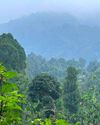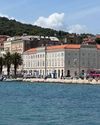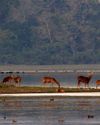
Located in the Aarey Milk Colony of Mumbai, adjacent to the Sanjay Gandhi National Park (the world's largest urban protected area), are a series of tiny hamlets called 'padas.' These are the homes of the indigenous tribal communities of Mumbai or 'Adivasis,' people who have called the place home for thousands of years. Unlike the rest of the city with its sky-high buildings and sprawling slums, these hamlets are an otherworldly place. Enveloped in greenery and thriving with all forms of wildlife, these places are the epitome of being at one with Nature. But what is most incredible is the fact that wild leopards also call this area home, sharing space with the human inhabitants of these hamlets. Last year in December, I had the fortune of visiting the home of Prakash Bhoir from the Warli tribal community in one such hamlet called Kelti Pada.
"People think we tribals are poor and in need of development. But we do not think so. Look around this place. We live amid so many trees. We have plenty of fresh air to breathe. People in the rest of the city have cats and dogs as their companions, but here we live with leopards. How can we be poor?" claimed Prakash Bhoir, a local Adivasi leader who also holds a job in the city's municipal corporation, as he showed me around his beautiful home.
Bu hikaye Travellers' World dergisinin February - March 2023 sayısından alınmıştır.
Start your 7-day Magzter GOLD free trial to access thousands of curated premium stories, and 9,000+ magazines and newspapers.
Already a subscriber ? Giriş Yap
Bu hikaye Travellers' World dergisinin February - March 2023 sayısından alınmıştır.
Start your 7-day Magzter GOLD free trial to access thousands of curated premium stories, and 9,000+ magazines and newspapers.
Already a subscriber? Giriş Yap

National Parks Of India
India is blessed with a rich tapestry of biodiversity that is both a natural heritage and a national treasure. The concept of national parks in the country traces back to the late 19th century when the importance of conserving wildlife began to take root in the consciousness of the colonial administration. The first national park in India, Hailey National Park (now known as Rajaji National Park), was established in 1936, marking a historic commitment to wildlife conservation. The post-independence era saw an exponential increase in protected areas, primarily driven by a need to conserve India’s unique flora and fauna threatened by rampant industrialization and urbanization.

10 Fascinating Wildlife Sanctuaries
TO EXPLORE THE WILD SIDE OF INDIA

Conversation with the "BOOK MARKETING GIRL"
In an age where digital advancements and artificial intelligence often overshadow traditional practices, two visionaries have chosen a different path.

FARM AAVJOSAA - HER STORY
“Riddhi was a whirlwind of energy, unable to endure even a minute apart from her twin, Siddhi.

FOOD MEETS FANTASY IN CROATIA
As the sun dipped below the horizon, casting a warm golden glow over the rolling hills of Croatia, Foodpreneur Debaditya Chaudhury found himself on a gastronomic adventure that promised to tantalize his taste buds and inspire his culinary creativity.

THE UNTAMED BEAUTY OF SATPURA TIGER RESERVE
In Conversation with L. Krishna Moorthy, The Field Director of Satpura Tiger Reserve

SUNDARBANS THROUGH THE DECADES
As Witnessed By Anil Mistry, The Swamp Tiger Rescuer

LOOK EAST - WILDLIFE AND TOURISM IN THE NORTHEAST OF INDIA.
The North East of India is an ecological and biodiversity hotspot. Diverse habitats and ecosystems - each with its own species of birds, animals and plants – make this region home to an abundance of flora and fauna.

KAZIRANGA NATIONAL PARK AND TIGER RESERVE
There is a mad frenzy for travelling in recent times. Everywhere you look, read, or hear, people travel worldwide, domestic, offbeat travel has become a trend.

CORBETT NATIONAL PARK: A Legacy of Conservation and Biodiversity
From the moment I set foot in the enchanting and tranquil realm of Corbett National Park, a deep connection was forged in my heart.